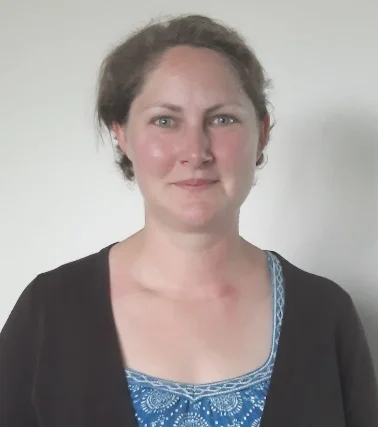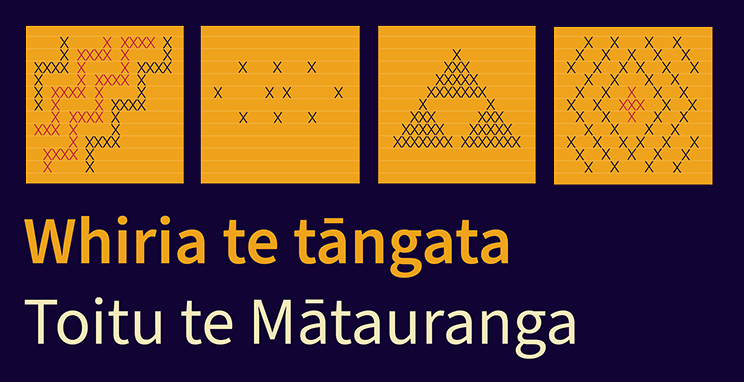Engaging my organisation through action learning
Heather Furniss, Community Engagement Librarian at Matamata-Piako District Libraries and a Kākaho in the Whiria te Tāngata programme talks about moving from the book-learning to action-lead learning phase of the programme.
The power of discussion
Mā te kōrero, ka mōhio, mā te mōhio ka mārama, mā te mārama ka mātau, mā te mātau ka ora.
With discussion comes knowledge, with knowledge comes light and understanding, with light and understanding comes wisdom, with wisdom comes wellness.
This whakatauki aptly describes the journey our Kākaho have been on as we near the end of the Whiria te Tāngata kaupapa. This means we’ve wrapped up our ‘book-learning’ and are sinking our teeth into ‘action-led learning’.

Heather Furniss.
We have been taking stock of where we are at in the four different workstreams using “Kōrero, mōhio, mārama and mātau” to describe our abilities. These are also the kupu used in the Workforce Capability Framework for librarians to self-reflect on their current capabilities to identify areas of development.
Our online discussion board has been a hive of activity as we have looked deeply into ourselves, our libraries and our wider organisations to analyse what we know and what we are doing. We have found commonalities, such as disconnects between policies on paper and lived experience. There’s also an eagerness to learn from each other and engage with mātauranga Māori, despite a lack of resourcing in this space
Building respect and mana
What I’ve found particularly valuable when investigating topics like whether our organisation has a Te Tiriti o Waitangi policy, or a Māori strategy was talking to staff in other departments to learn the history of our policies and the organisation’s relationship with Māori. Learning when our Te Mana Whenua forum was established, the process of having a te reo Māori policy written and implemented, and how the elected members influence what our Council does.
Another example was while delving into Te Tōtara, I went to our People and Wellness team (HR) to discuss with them the background and future plans for learning and development. The staff I met and discussed Whiria te Tāngata with opened my eyes to our organisation in a new way. I enjoyed forging relationships and communication lines that hadn’t existed before.
By asking for 10-20 minutes over a coffee from staff in our Policy, People & Wellness, Records, and Communications teams, I put names and faces together and showed respect and mana for the work they had done. It also led me to discover that other departments/teams in our organisation are in the same boat as libraries and that our work can support theirs as well.
Supporting one another in our journey
E kore te tōtara e tū noa i te pārae engari me tū i roto i te wao-nui-a-Tāne
The tōtara does not stand alone on the plain, it stands within the great forest
Now that we’ve started the action-led learning part of our project, we are putting the framework and strategy we’ve learnt about to the test. But we are not alone in this. The Kākaho have been great at supporting each other to develop projects, finesse our approaches, commiserate when things don’t go to plan and provide inspiration for new ideas. As librarians, we’ve always been good at sharing and supporting each other; and when working collaboratively as part of Whiria te Tāngata; this is even more so.
But it’s also the relationships we’ve developed within our host organisations that support us to achieve great things. Most libraries don’t operate independently, they are usually part of a bigger organisation. Reaching out to form connections with other teams as part of my research has made a huge impact on my ability to test out and discover how Mātauranga Māori, Te Tōtara, and the data, research and evidence can be implemented in my library.
Projects to share what I’ve learnt
I’ve been working with the People & Wellness team to see how Te Tōtara can be used to help with our organisational learning and development. We’ve taken the branches and related them to our different staff roles and looked at what the triggers are to move to the next stage of development, and where to access the training and knowledge from.
When looking at the Data, Research and Evidence strategy Maturity Model, I’ve met with our Records team to see what our wider Council is doing in the data collection and analysis space and seen where our library fits into this. I am working on a project as part of Whiria te Tāngata to create an evaluation framework for our programmes and services, to see if this is an easily achievable means for libraries to move up the maturity model.
With these two pieces of work being underpinned by Mātauranga Māori, I’ve had to rely on my fellow Kākaho to help reflect on our practice as our internal expertise and access to Māori knowledge is limited.
More about Whiria te Tāngata

The purpose of Whiria te Tāngata is kia toitū te mātauranga | Weaving the people together to ensure the long-term sustainability of the library sector that is widely valued, used, enabled to deliver positive social and economic outcomes for Aotearoa.
Whiria te Tāngata is a mātaruanga Māori led project.
Library sector workforce capability framework project — includes Te Tōtora workbook